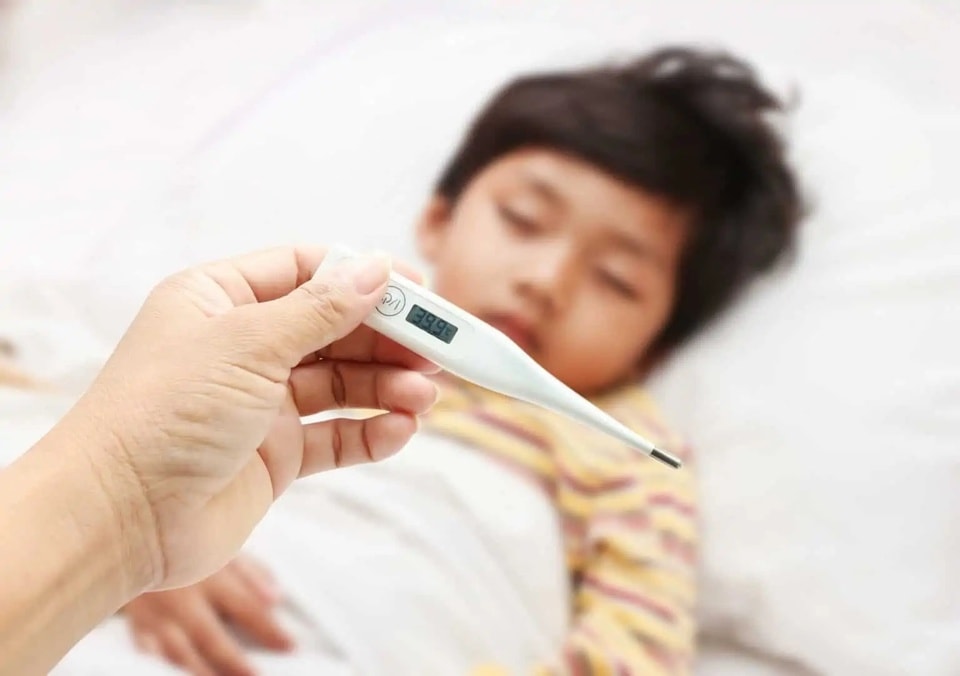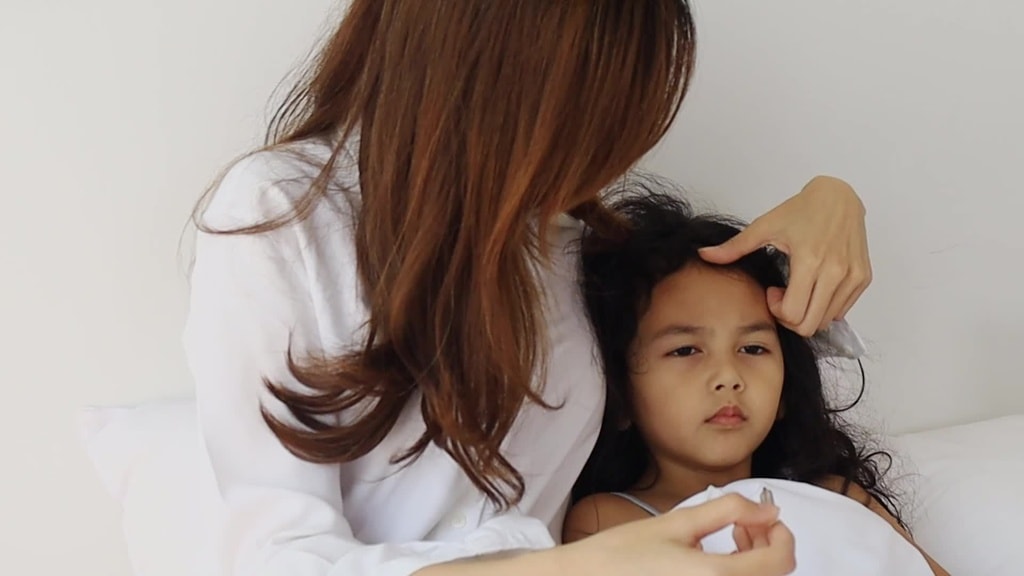What to do when children have high fever that is difficult to reduce?
According to Dr. Thanh Sang, for children under 3 months old with fever, even at night, parents should take their children to see a doctor because 80% of the cause is infection.
 |
All children with fever > 24 hours must be examined by a pediatrician. Photo: health.mingpao |
According to Dr. Nguyen Thanh Sang, Ho Chi Minh City Children's Hospital, children with fever, especially viral fever, sometimes have very high fevers, up to 39-40 degrees Celsius, and taking medicine does not reduce it. Children may only reduce it to 38 degrees Celsius and then continue to have a high fever.
"All children with fever > 24 hours must be examined by a pediatrician. However, many children take fever reducers at home but the fever does not go down, so parents should not worry too much," said Dr. Sang.
The nature of fever is the process of the body fighting against microorganisms. High body temperature will inactivate bacteria, viruses... so that the child's immune cells can easily work to push harmful microorganisms out of the body.
All children under 3 months of age should see a doctor when they have a fever.
This expert emphasized that even at night, parents should take their children to the doctor because 80% of the causes of this group of children are infections. In particular, children can suffer from some serious illnesses such as meningitis and sepsis. Therefore, when discovering that a baby under 3 months old has an armpit temperature of 38 degrees Celsius, is breastfeeding less, is lethargic and more tired than usual, parents must take their child to the doctor immediately.
"I have examined many babies under 3 months old who only drank a little, had no fever, and seemed more lethargic than usual. The results showed that they had meningitis. The sooner they were treated with antibiotics, the lower the rate of complications in this group of children," said Dr. Thanh Sang.
It is not necessary that the temperature be reduced from 40 degrees Celsius to 37 degrees Celsius.
According to Dr. Sang, the mentality of having to lower a child’s temperature to 37 degrees Celsius is not appropriate. Many children have a fever that is very difficult to reduce, especially in the first 3-5 days.
When the baby has a fever of 38.5 degrees Celsius, parents can give the baby a fever-reducing dose of paracetamol (acetaminophen) of 10-15 mg/kg and not more than 60 mg/kg/day.
The child's body temperature only needs to be lower than before taking the fever reducer to be temporarily acceptable. For example, a 10.5 kg child with a fever of 40 degrees Celsius takes a packet of paracetamol 150 mg. 30 minutes later, the child's temperature drops to 38.5 degrees Celsius, is less tired, less fussy, and sleeps better... parents do not need to wake the child up to wipe the child down or give him more medicine to lower the temperature to 37 degrees Celsius as usual.
 |
Many children have difficulty reducing fever. Photo: Vecteezy |
Convulsions are not related to high or low fever in children.
This depends on each child's constitution. For example, a child can have a fever of 40 degrees Celsius without convulsions, but some children have a fever of only 38 degrees Celsius and this phenomenon appears.
Febrile seizures rarely affect the brain or cause developmental delays as some rumors suggest. Children who need neurological evaluation include those who have seizures without fever or who have continuous seizures for unknown reasons. In these cases, they should be taken to the hospital to rule out epilepsy or other neurological problems.
According to the Ministry of Health's protocol, ibuprofen should not be used at home or without ruling out dengue fever. Parents who want to use it should consult a doctor or have ruled out dengue fever.
Don't worry too much if your child's fever hasn't gone down after taking medicine.
Dr. Sang emphasized that if after giving a child fever reducer but the fever does not go down, parents should not worry or force the child to take more medicine. This can harm the child’s liver and kidneys.
Parents can apply some physical methods to help their children cool down:
Dress the child in the thinnest layer possible, some children even wear only diapers. Do not cool the child if the fever is not higher than 40 degrees Celsius. Below 40 degrees Celsius, you should let the child sleep. Studies show that cooling the child's temperature does not reduce the child's temperature faster than taking medicine alone. Drink plenty of water, water with electrolytes (need to mix in the right ratio). Ventilated environment or room temperature 24-25 degrees Celsius. Fever-reducing patches do not help reduce fever.
Families should take their children back to the doctor immediately if they have one of the following severe signs or a fever accompanied by new symptoms (more tired breathing, more lethargy, higher fever, persistent diarrhea, etc.).
"Parents should stay by their child's side, listen to them, monitor any new abnormalities that appear, and not give them any more medicine if it hasn't been 4-6 hours or cool them down," said Dr. Sang./.

